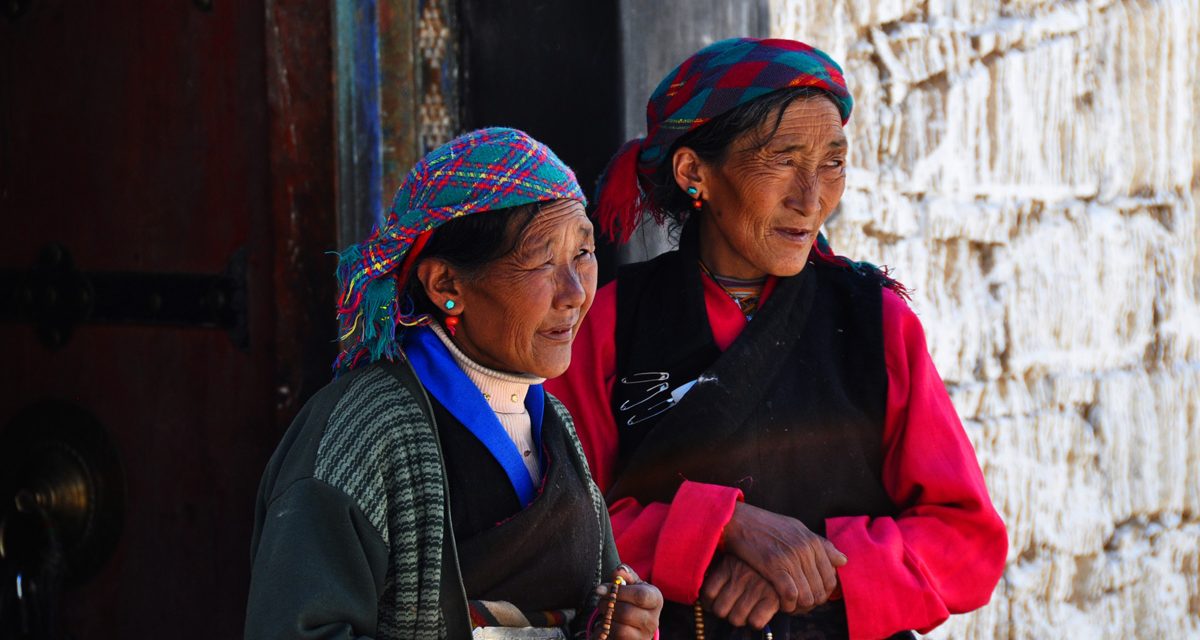Image courtesy of Prasad Kholkute, on flickr
The Tibetan people are deeply spiritual, compassionate and humble. There aren’t too many places in the world where visitors feel more welcome, and they have a lot to teach us westerners about finding true happiness.
Tibet isn’t the easiest place to travel, with the government requiring all visitors to travel with a guide and obtain various permits. This means that outdoor adventure can be a little bit less accessible in Tibet, so I don’t have so many items on my list for this incredible country as I do for most.
While climbers love Tibet’s many peaks – including Everest which is less commonly summited from the Tibet side – the best of them are glaciated and absolutely for the most experienced climbers.
Rafting was once a popular pursuit for tourists but due to safety concerns rafting tours were banned in 2017. Kayaking tours (or tours that include some kayaking) are available but aren’t terribly common.
The most adventurous trips that remain are trekking/hiking trips and mountain biking/cycling. Due to the restrictions on travelling without a guide, most Tibet tours will include much more than just your trek/ride and will also include sightseeing in the preceding days to ensure acclimatisation.
For those who pride themselves as being ‘woke’, I already know what you’re thinking about the idea of travelling to Tibet. All I’ll say here is that this isn’t something I feel the need to discuss in this “Bucket List” post. Tibet is on my bucket list, whether I get there now or in 20 years.
Trekking the sacred Mt. Kailash

Image courtesy of reurinkjan, on flickr
In Tibet’s far west stands the massive 6,638 metre Mount Kailash, isolated from the Himalayan range. It’s held as holy by four different religions – Bon, Buddhism, Hinduism and Jainism – and every year thousands of pilgrims trek to Kailash, many believing that traversing its base will cleanse their sins and bring good luck. Climbing to the summit is forbidden out of respect for the mountain.
This is one of the most demanding and sacred treks in the world. At 52 kilometres and 3 days, it isn’t the longest, but the altitude and terrain are the killers. Getting to the trailhead from Lhasa is a four-day drive.
Over the three days of trekking you’ll not only take in the most mesmerising Himalayan scenery, but you’ll visit monasteries and traditional Tibetan villages. Many companies offer tours that include Mount Kailash. One such tour is this 15-day Tibet and Mount Kailash Small Group Tour. Or check out Travtasy’s Ultimate Guide to Mount Kailash Tours.
Mountain bike around Lhasa or even from Lhasa to Kathmandu (Nepal)

Image courtesy of Marc van der Chijs, on flickr
Many people spend a few days or a week exploring with Lhasa as your base, taking in many of the region’s most popular attractions like Gaden Monastery, Carving Buddha, Potala Palace, the Nethang Village, and of course Angkor Wat.
For a more extreme adventure, how about a 18-day ride from Lhasa in Tibet all the way to Kathmandu in Nepal? Starting with three days of sightseeing and cultural experiences around Lhasa to help your body acclimatise, you’ll then spend 15 days riding your way to Kathmandu, taking in breathtaking scenery, villages, monasteries and temples, lakes and rivers along the way. Accommodation is a mixture of camping, homestays and hotels.
Mountain biking tours (even the short ones) are fully supported by vehicles so if you need to rest – understandable considering the altitude here – you’ll have nothing to worry about.
Trek from Ganden Monastery to Samye Monastery

Image courtesy of lhalevi, on flickr
Although the trek lasts four days, most tours include a visit to Ganden Monastery on the day before your hike, where you’ll do a warm-up hike on the Ganden Kora – a trail that circles the monastery. This can also make for a spectacular day hike from Lhasa if you don’t have time.
Getting to Tibet
As mentioned, Tibet Tours will generally include more than just your trek or bike ride. Many will even include your transport by train or air. They also have the advantage of saving the hassle of organising all required visas and permits for your trip. Do make sure that you organise your tour at least four to six weeks before your arrival. The permit process can take time and many trips have been ruined by a late application.
Have you been to Tibet? Got it on your bucket list? If you have any questions, comments, updates or corrections? Let us know by commenting below.





